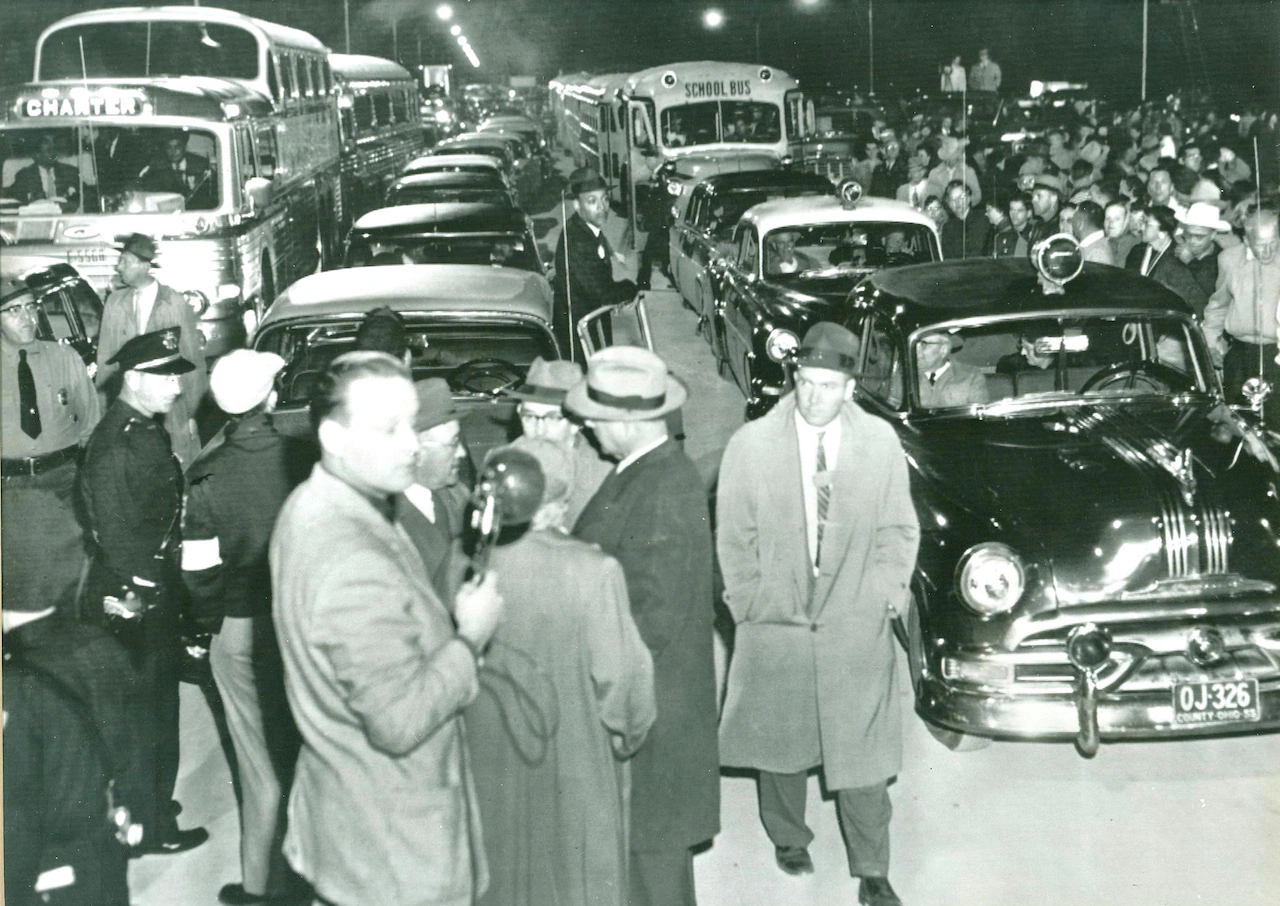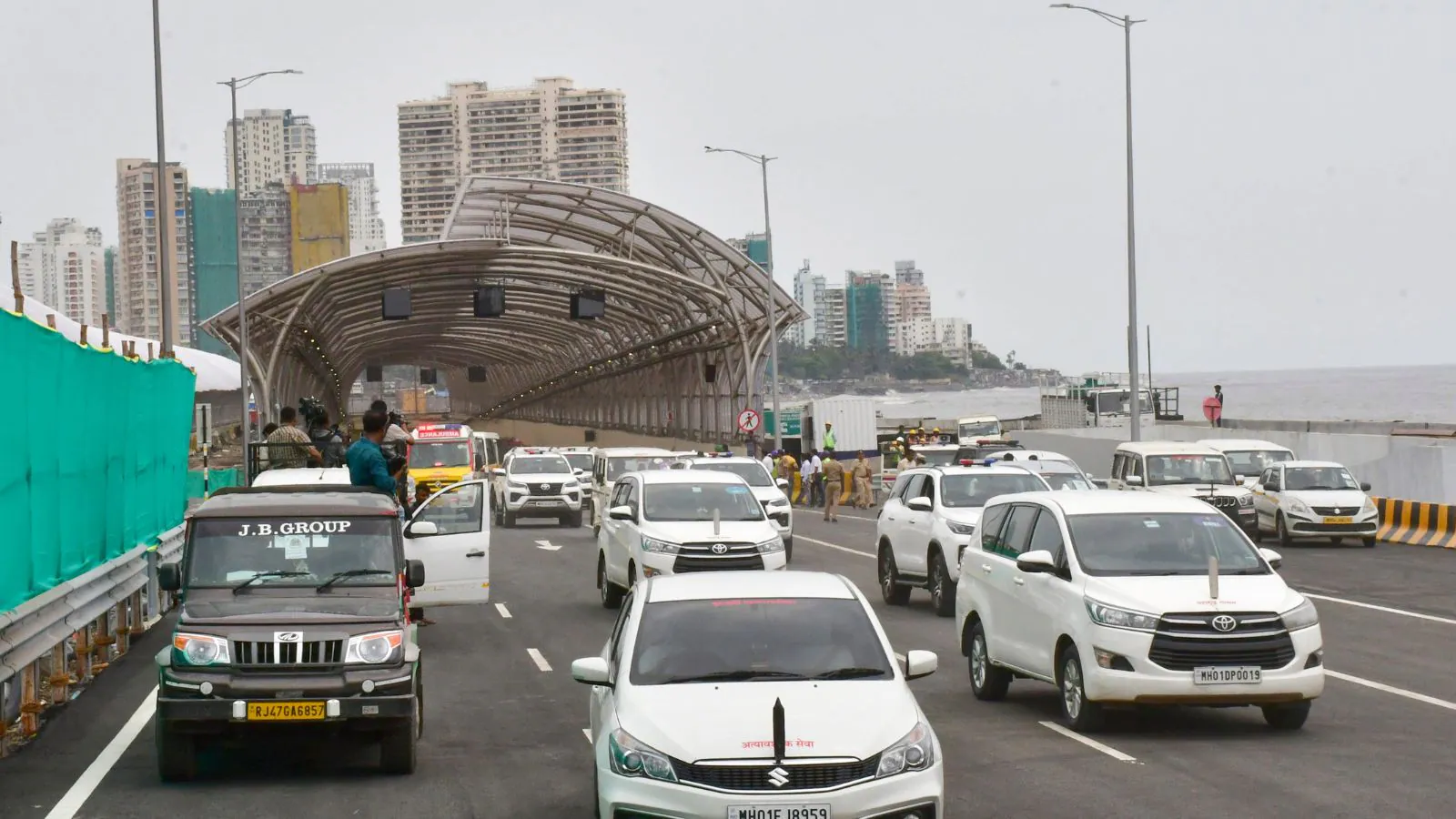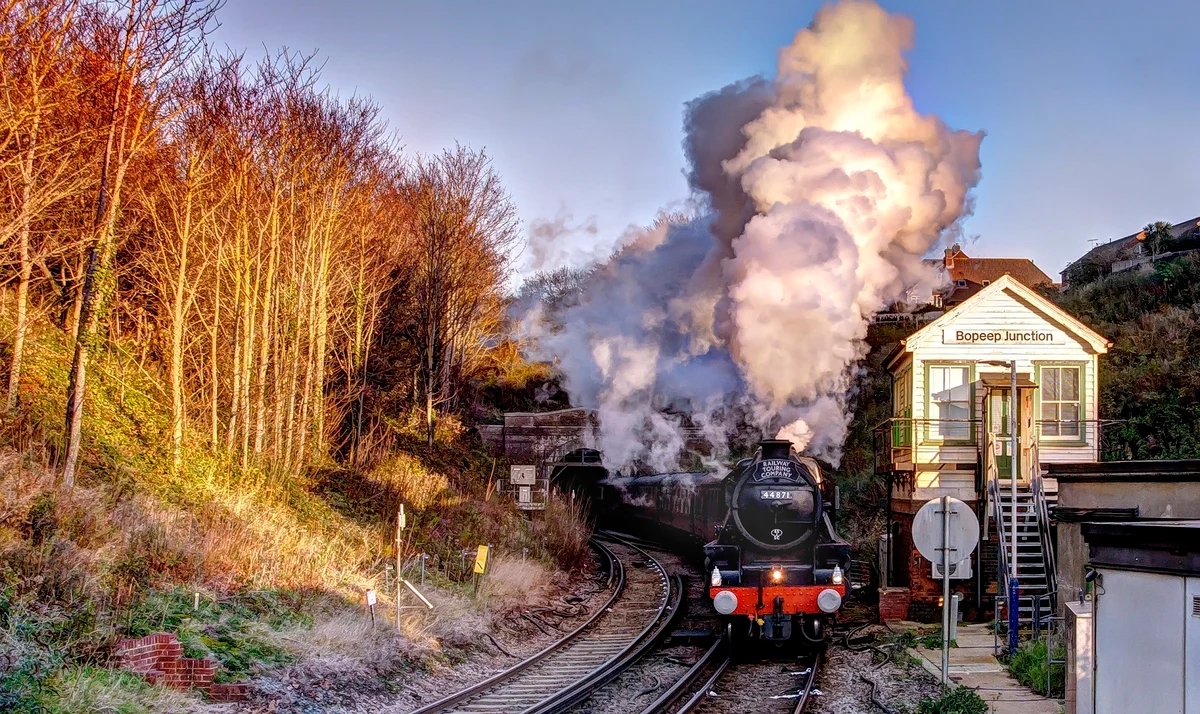
BEREA, Ohio – At midnight on Oct. 1, 1955, Ohio Gov. Frank Lausche gave the order: “Remove all barricades! Open the gates and let the traffic flow!”
With that command, the Ohio Turnpike came to life. Cars and trucks rolled eastward from the Indiana border, headlights cutting through the night. For the first time, motorists could cross the state on a single, limited-access “super highway.”
For truckers, the Turnpike meant five fewer hours on the road, according to Turnpike literature from the time. For family drivers, it shaved three hours off the trip.
The moment signaled more than the opening of a new road. It marked the dawn of a new way of travel in the Buckeye State — faster, safer and more direct than ever before — ushering Ohio into the modern highway era.
Why it mattered in 1955
Before the Turnpike, cross-state driving was often a grind. Routes wound through towns, where stoplights and stop signs slowed travelers. Trucks in particular struggled with indirect roads designed to pass through as many communities as possible, not to move goods quickly.
The Ohio Turnpike changed that overnight. Its 241 miles offered smooth pavement, wide shoulders, and no intersections. Original speed limits were set at 65 mph for cars and 55 mph for trucks. The cost for the full trip was $3 for automobiles and $30 for the largest trucks – about a fifth of what it costs now.
On opening day, 44,000 vehicles used the road. Newspapers hailed it as a revolution. The New York Times described the Ohio Turnpike as “the western portion of 611 miles of uninterrupted turnpike between the Ohio-Indiana line and the Delaware River north of Philadelphia, which will speed the transportation of goods and people between the cities of the nation’s industrial heartland.”
For Ohio, the Turnpike was the biggest public works project in state history. For America, it was yet another preview of the interstate system to come.
Building the dream
The idea of toll roads was hardly new. Ancient travelers paid tolls on the Susa-Babylon highway in the seventh century B.C. In Ohio, wagon drivers once paid two cents per 10 miles on the National Road, a road that, in large parts of the state, ran along a path near what is now I-70.
The modern Turnpike required a massive new effort. In 1949, the Ohio General Assembly authorized creation of the Turnpike Commission. Financing came in 1952, with the sale of $326 million in bonds — then the largest bond issue in U.S. history.
Groundbreaking took place on Oct. 27, 1952. The first contract was awarded for construction of the foundation for the bridge over the Cuyahoga River Valley, south of Cleveland. Within three years, the entire road was finished.
At the peak, 10,000 workers and 2,300 machines were on the job. More than 5,700 parcels of land were acquired. Crews poured 7 million square yards of concrete, erected 64,000 tons of steel, and installed 2.5 million feet of fencing.
The road featured two 12-foot lanes in each direction, broad shoulders, and a median of at least 56 feet throughout. Fifteen interchanges and 16 service plazas dotted the route. On the eve of the opening, a dedication ceremony at the Indiana line featured music from the Bryan High School A Cappella Choir and speeches by state leaders. At midnight, the gates opened to the public.
The Turnpike was officially named for James Shocknessy, the commission’s first chairman, after his death in 1976.
National context
The Ohio Turnpike fit into a larger story of America’s changing roads.
In the early 20th century, drivers relied on a patchwork of “auto trails” such as the Lincoln Highway and the Dixie Highway. These were often gravel, prone to breakdowns, and routed through countless towns, explains author and highway historian Stephen Provost, whose many books on roadways includes America’s First Highways.
“Travel at that point was a nightmare in places,” Provost says. “You’d probably be going 40 miles an hour, stopping for gas every 100 miles, hoping your engine didn’t overheat on hills.”
The Turnpike — and its older cousin, the Pennsylvania Turnpike that had reached the Ohio line in 1951 — offered a glimpse of something better: wide lanes, limited access, and a faster way across the entire state.
A network of turnpikes was planned for Ohio – with this road officially being called Ohio Turnpike Project No. 1. Others were planned. But developing free highways took precedence after President Dwight D. Eisenhower signed National Interstate and Defense Highways Act of 1956 – leaving northern Ohio drivers with the only pay highway in the state to this day.
Back then – in eliminating stoplights and detours – the new roads transformed commerce and daily life. Trucking surged, and railroads lost hold on their monopoly on long-haul freight.
Roadside services also changed, Provost notes. Chain motels and restaurants flourished along the newer major highways, creating the largely uniform travel landscape Americans know today – replacing the many places to eat and stay with a more local flavor along the older routes.
Think of the plot of the Pixar movie Cars, and what became of the fictional town of Radiator Springs along U.S. Route 66 when a highway offered a fast bypass.
The Ohio Turnpike eventually took on the route labels as I-76, I-80 and I-90 as it crosses the state, with the I-90 portion being part of America’s longest interstate – stretching 3,021 miles from Boston to Seattle.
The early service plazas were unique as well. Each featured a dining room seating about 150 people, a coffee shop with counter booths, and a walk-up snack bar. Breakfast options ran from 35 cents to $1.10. For $1.10, a traveler could enjoy juice, bacon, eggs, toast and coffee. Dinner entrées topped out at $2.10.
Gasoline cost about 20 cents a gallon.
Flashing forward, 56.1 million vehicles used the Turnpike last year. Passenger cars generated $147.6 million in tolls, while trucks — though fewer in number — brought in $240.8 million in tolls.
Milestones
Dec. 1, 1954: Opening of the first 22 miles in eastern Ohio, connecting to the Pennsylvania Turnpike to relieve the bottleneck caused by the abrupt end of the Pennsylvania highway.
Oct. 1, 1955: Remaining stretch of 219 miles across Ohio opens at once.
1966: First connection to the interstate system, at I-71 near Cleveland.
1971: Link to the newly completed Interstate 80 across Pennsylvania, spiking traffic at the Youngstown interchange by 63% in one year.
1978: Record blizzard shuts the Turnpike for the first and only time. It took 77 hours and $530,000 to clear the snow.
1992: Original construction bonds retired, but tolls stay in place, the result of a state law change two years earlier. As originally promised, the road was to become free once the construction bonds were paid off.
1990s–2010s: Highway widened to three lanes in each direction for all but far western Ohio, service plazas rebuilt and bridges modernized.
2009: E-Z Pass arrives, offering drivers the chance to pay electronically while passing through toll booths at slow speeds.
2024: Open-road tolling launches, letting E-Z Pass drivers move nonstop at highway speeds.
Looking ahead
Ohio Turnpike and Infrastructure Commission spokesperson Brian Newbacher says the road remains in strong shape, but change is coming in incremental ways.
Planned safety upgrades include a new Intelligent Transportation System with overhead signs, cameras and variable speed limits. Eight new maintenance garages are in the works, replacing the original 1950s buildings to handle today’s larger snowplow fleet.
Convenience is another focus moving forward, Newbacher says. More electric vehicle charging stations are being added. Truck parking will expand, with a new information system to alert drivers about available spaces
Artificial intelligence may be introduced for traffic monitoring and customer service.
As for tolls, the Turnpike is midway through a multi-year plan to hike prices approved by the commission in 2024. Additional adjustments are due each January in 2026, 2027 and 2028.
Nowadays – for motorists using the discounted E-Z Pass system – it costs $15.50 for cars to travel the length of the road west to east, and $18.50 in the other direction. For the largest trucks, the cross-state tolls with E-Z Pass top out at $152.25.
Tolls have climbed, lanes have widened, plazas have been rebuilt over the last 70 years. What hasn’t changed is the Turnpike’s place as northern Ohio’s main east–west corridor — a staple for travel since 1955.



